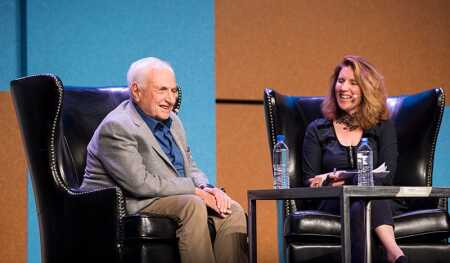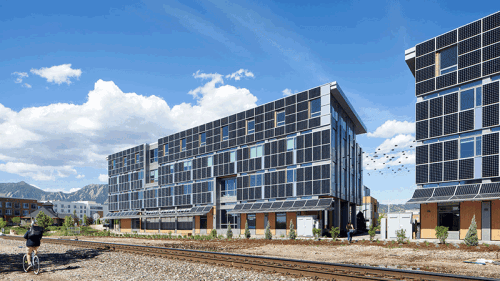Architects must take more responsibility for their work, legendary designer Frank Gehry told a general session audience Tuesday during the 2017 ULI Fall Meeting.
Architects need to “get into the fray,” Gehry said. Too often architects are overprotected and do not accept blame or credit for the cost and efficiency of their buildings, he said.
“We need to take more responsibility and become partners” with developers, the 88-year-old Pritzker Prize winner told the audience.
Introduced by event cochair Wayne Ratkovich as the “greatest living architect in the world today,” Gehry covered a wide range of topics during his discussion, from the role of arts education for elementary school students to the “Bilbao effect,” the economic impact of the Guggenheim Museum in Bilbao, Spain, and other architecturally significant cultural institutions.
Known for his flamboyant, eye-catching designs, including the Guggenheim and the Walt Disney Concert Hall in Los Angeles, Gehry repeatedly emphasized that dramatic architecture should solve problems and does not have to be expensive.
The renovation of his Santa Monica house in 1978, his first project to capture international attention, only cost $50,000, he said.
“If people are realistic and partner together, you can do a building that wins,” Gehry said in the discussion, moderated by Frances Anderton, a writer and commentator on design and architecture.
Gehry said his role as an architect is to “find technology that eliminates waste.” His design for 8 Spruce Street, the 76-story residential tower in New York City with a distinctive undulating facade, required no change orders to the curtain wall, due to the use of cutting-edge technology, he said.
“If you cut into waste, that is the role of the architect, to help clients understand that,” he said. “The profession should be aligning itself with cutting costs, cutting waste.”
Gehry remains contemporary, including designing Facebook’s new headquarters in Menlo Park, California. For the past four years, Gehry has worked as a volunteer to help develop new ideas for redeveloping the Los Angeles River, the 51-mile (82 km) concrete flood control channel developed by the U.S. Army Corps of Engineers.
The river project has led to an extensive study of water reclamation and the need to create parks in the city, he said. A plan was developed to create park space that could be turned into a lake to capture water during flood periods, but the concept “didn’t get any takers,” said Gehry, who is still working on a master plan for the river.
Some people hope to restore the river to the point where trout will once again inhabit the water, he said. “I can tell you it will never happen.”
The Canadian-born architect has strong ties to Los Angeles, the city he calls home. He first moved to Los Angeles in 1949 and graduated from the University of Southern California. After extending his studies at Harvard, he returned to Los Angeles and started his own practice in 1962.
His distinctive work can be found throughout the city, including his original Santa Monica home and the distinctive offices for the Chiat/Day advertising agency in Venice, which features a giant sculpture of binoculars.
Anderton asked Gehry his opinion about all the new development in Los Angeles.
“Los Angeles used to look different,” Gehry said. “Now it is starting to look like every other city in the world.”
But he quickly stopped short of criticizing any specific institutions. “I didn’t come here to rag on people,” he said with a laugh.
Gehry said he was unable to attend ceremonies this month marking the 20th anniversary of the completion of the Guggenheim in Bilbao, which has become one of the most popular attractions in Spain. The Bilbao effect is very real, he said.
“Cultural venues have been architecturally more powerful” than many other economic drivers, he said.
Architecturally, Gehry says his real passion these days is music venues. Earlier this year he completed the performance space for Pierre Boulez Hall in Berlin.
“I do love building concert halls,” he said. “I love solving their problems.”



